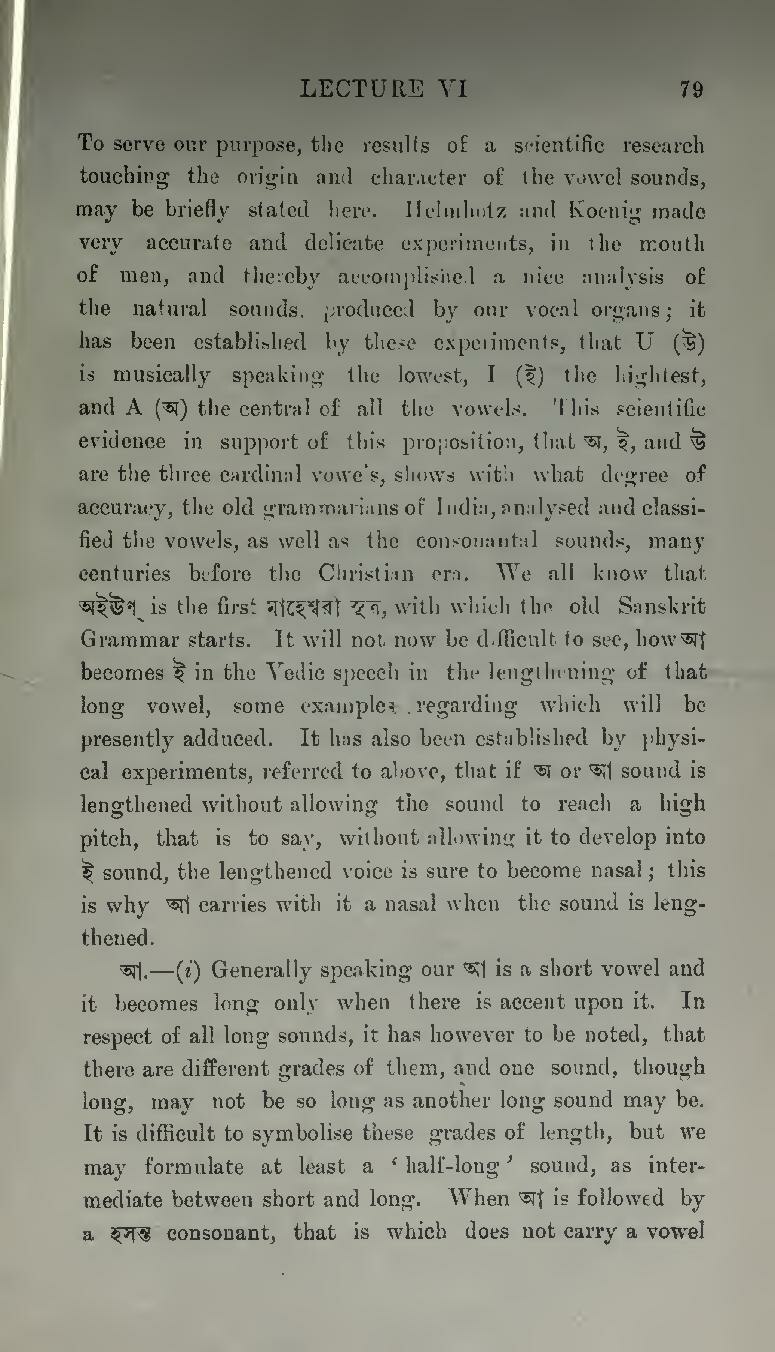To serve our purpose, the results of a scientific research touching the origin and character of the vowel sounds, may be briefly stated here. Helmhotz and Koenig made very accurate and delicate experiments, in the mouth of men, and thereby accomplished a nice analysis of the natural sounds, produced by our vocal organs; it has been established by these experiments, that U (উ) is musically speaking the lowest, I (ই) the highest, and A (অ) the central of all the vowels. This scientific evidence in support of this proposition, that অ, ই, and উ are the three cardinal vowels, shows with what degree of accuracy, the old grammarians of India, analysed and classified the vowels, as well as the consonantal sounds, many centuries before the Christian era. We all know that অইঊণ্ is the first মাহেশ্বরী সূত্র, with which the old Sanskrit Grammar starts. It will not now be difficult to see, how আ becomes ই in the Vedic speech in the lengthening of that long vowel, some examples regarding which will be presently adduced. It has also been established by physical experiments, referred to above, that if অ or আ sound is lengthened without allowing the sound to reach a high pitch, that is to say, without allowing it to develop into ই sound, the lengthened voice is sure to become nasal; this is why আ carries with it a nasal when the sound is lengthened.
আ.—(i) Generally speaking our আ is a short vowel and it becomes long only when there is accent upon it. In respect of all long sounds, it has however to be noted, that there are different grades of them, and one sound, though long, may not be so long as another long sound may be. It is difficult to symbolise these grades of length, but we may formulate at least a 'half-long' sound, as intermediate between short and long. When আ is followed by a হসন্ত consonant, that is which does not carry a vowel
